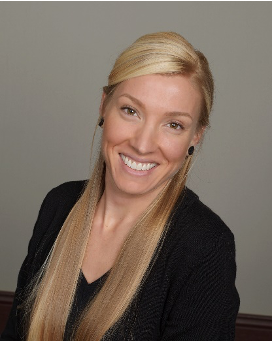 The Four Points of SMART are points, not steps, and the idea is to work on all of them as needed, often at the same time.
The Four Points of SMART are points, not steps, and the idea is to work on all of them as needed, often at the same time.
That said, their order makes sense for someone just starting on their journey toward freedom from an addiction. First they have to build motivation to abstain from the addictive substance or behavior and then they need to be able to cope with urges they will inevitably experience.
In this second of four posts on the points of SMART, I’m going to talk about some of the techniques the program offers to those struggling with urges so they don’t have to rely on some vague idea of “willpower.”
A long time ago, when I decided to quit smoking cigarettes, a friend told me that my cravings to smoke would get shorter, less frequent, and less intense across time. I found that this was true, and that alone sustained me when I really, really wanted an after-dinner cigarette. It’s a memory I drew on when I quit drinking, but it wasn’t enough. On average my urges to drink have grown less powerful and less common across time, but the progression has been much less linear and I still get hit with a doozy more than I’d like, often in response to an unexpected event. (I find celebratory moments more challenging than negative events, but either can be dangerous.)
Fortunately, SMART has given me a set of practical responses. I divide them into two camps: moving away from the urge and moving into the urge. From what I’ve observed on the SMART online forum, some people prefer one approach over the other while most use a combination, often based on the strength of the urge and the context in which it occurs.
Moving away from an urge can involve something called “stop thought,” which simply means nipping in the bud any random thought about drinking. For instance, an hour before the end of the workday, I might have the thought to pick up some wine. If I tell myself “stop thought” without dwelling on it, the notion never develops into a full-blown urge to drink. Other techniques that fall into this basket are delay (temporarily telling myself that I can drink in two hours if I still want to—or tomorrow but not today) and distraction.
 Point 4 (Living a Balanced Life) can come in handy here (more on that in a future post), but any old distraction can help: a substitute beverage, a phone call, internet surfing, going for a walk, playing with a dog, watching a movie. (SMART also offers direct support here in the form of a 24-hour chat room, the message board, and both face-to-face and online meetings.) I’ve found that the farther away I get from my last drink, the more automatic these responses become and the more easily “stop thought” and delay and/or distraction do the trick.
Point 4 (Living a Balanced Life) can come in handy here (more on that in a future post), but any old distraction can help: a substitute beverage, a phone call, internet surfing, going for a walk, playing with a dog, watching a movie. (SMART also offers direct support here in the form of a 24-hour chat room, the message board, and both face-to-face and online meetings.) I’ve found that the farther away I get from my last drink, the more automatic these responses become and the more easily “stop thought” and delay and/or distraction do the trick.
Yet sometimes an urge is incredibly powerful, is more deeply seated, seems to be a rational response to a difficult life event, or just plain old outlasts any distractions I throw at it. That’s when I find it helpful to go “into” the urge, and this is where the work I’ve done in the SMART program really rewards that effort. One technique is called the ABC. I won’t describe it in detail here, but you can read about it on the SMART website and several message board volunteers are gifted at walking people through examples from their own lives. Basically it’s a process for disputing the irrational beliefs that underlie people’s desires to consume a substance or engage in a behavior that they know prevents them from having the life they want. It is a way of making conscious the often subconscious beliefs that can guide behavior and undermine progress, and also helpful in making choices well beyond addiction questions. My favorite technique these days is something called “urge surfing,” which is pretty much what it sounds like.
One reason so many people have been able to change undesirable, ingrained patterns through SMART is because they are given tools and techniques for doing so rather than having to “white knuckling” the process. The word tool implies labor, and it does take work to change longstanding habits. The first two letters in the acronym SMART stand for “self-management.” Yet there’s a community there for both moral and practical support, and that community has ultimately proved more permanent and powerful than any urges. Trust me: that’s saying a lot.
Elspeth has been a member of SMART Recovery for about 13 months. She is a writer interested in fitness and nutrition.



